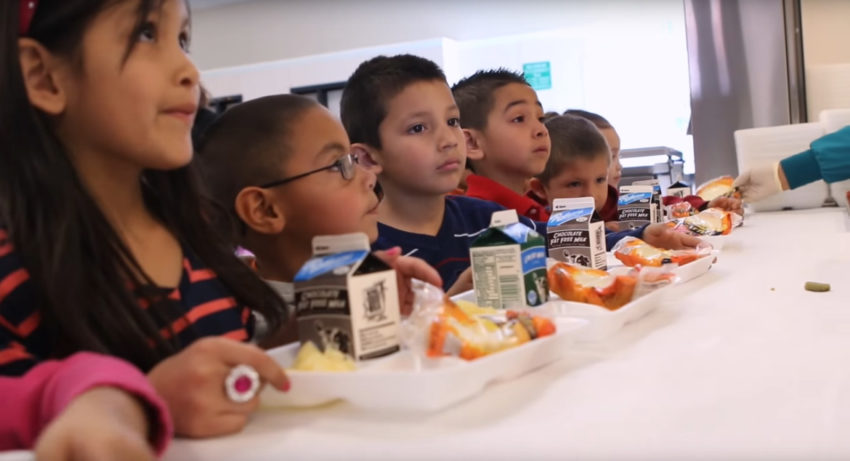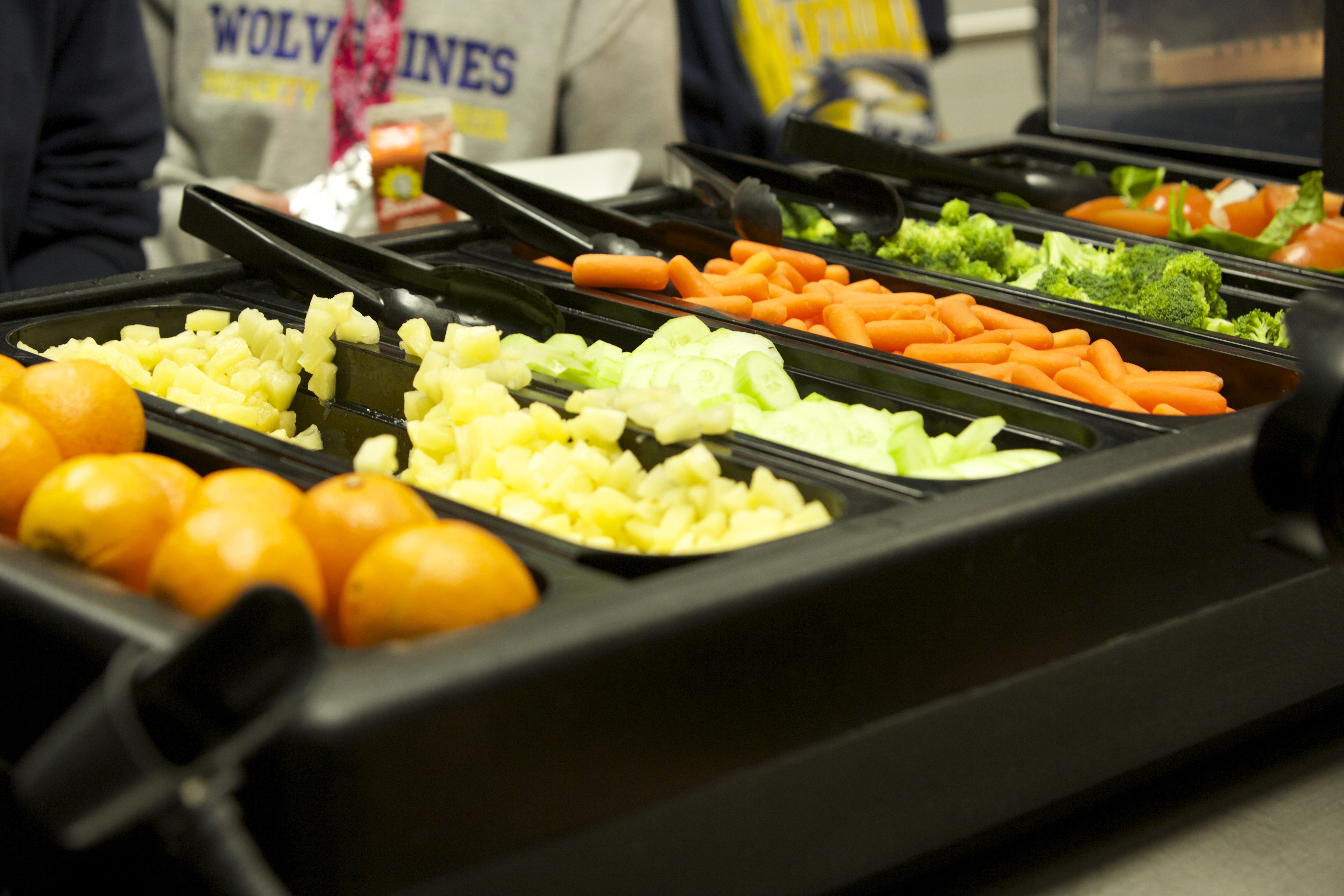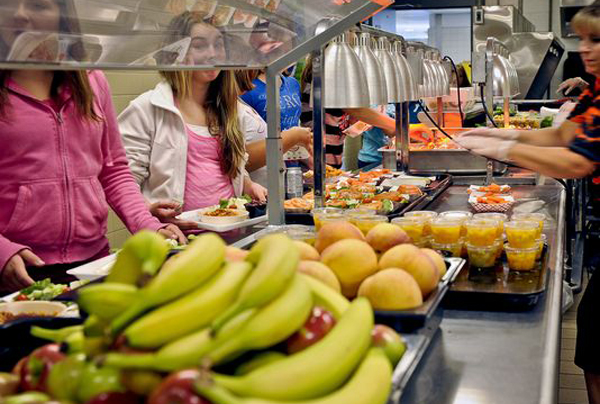
Share On Social!
School food nutrition is at risk again.
The USDA, which relaxed school nutrition standards in 2018, is proposing two rule changes it says will give schools and summer programs more flexibility to meet student meal preferences and reduce food waste.
But health experts warn this will roll back progress on school food nutrition.
Schools could, for instance, cut breakfast fruit by a half-cup. Fries and burgers could be served a la carte. Pasta could count as a vegetable.
This is a longer-term health threat than the coronavirus pandemic, according to Healthy Eating Research.
“This would create a huge loophole in school nutrition guidelines, paving the way for children to choose pizza, burgers, French fries, and other foods high in calories, saturated fat or sodium in place of balanced school meals every day,” said Colin Schwartz of the Center for Science in the Public Interest in a statement.
Comment Now on Proposed School Food Rules
Check out these model comments from our Salud America! team:
MODEL COMMENT: GENERAL
For the health of Latino and all children, I urge the USDA to preserve strong nutrition standards for meals served in schools. Providing “flexibility” by permitting schools to serve a la carte French fries, hamburgers, and other high-calorie, high-fat, or high-sodium foods, is a step back on the progress already made in promoting a healthier lifestyle, a healthy weight, and overall health equity. About 1 in 3 Latino families live in poverty and 1 in 4 are food insecure. They face unhealthy food environments, according to a Salud America! research review (http://salud.to/foodres). For many kids, school is their only chance to get a well-balanced meal. That’s why I urge you now to keep the bar high when it comes to serving nutritious food in schools across America and not reduce the nutritional quality of school food.
MODEL COMMENT: PARENTS
My kids deserve healthy meals at school. I strongly urge the USDA to not allow any changes to the interim final rule on school meals and child nutrition programs. Such actions will negatively impact not only my family, but also Latino and all communities. It will jeopardize much of the gains made in decreasing national childhood obesity rates. Healthy school meals offer much-needed nutrition to kids. This is especially true for the 1 in 3 Latino kids who participate in free and reduced-price lunch programs. About 1 in 4 Latino families are food insecure and face unhealthy food environments, according to a Salud America! research review (http://salud.to/foodres). As a concerned parent, I urge you now to keep healthy nutrition standards in place. Do not reduce the nutritional quality of food served to kids at school.
Comments had been due March 23, 2020. The deadline is now April 22, 2020.
Hit the orange button to submit this comment!
USDA’s Rationale for School Food Changes
The USDA is proposing its two rule changes to “put local school and summer food service operators back in the driver’s seat of their programs, because they know their children best.”
 USDA officials say the school meals proposed rule would add flexibility for local school districts to serve children food they will want to eat. It would allow schools to offer lunch entrees for a la carte purchase. It also lets schools adjust fruit servings at breakfast, and more.
USDA officials say the school meals proposed rule would add flexibility for local school districts to serve children food they will want to eat. It would allow schools to offer lunch entrees for a la carte purchase. It also lets schools adjust fruit servings at breakfast, and more.
“Schools and school districts continue to tell us that there is still too much food waste and that more common-sense flexibility is needed to provide students nutritious and appetizing meals,” U.S. Secretary of Agriculture Sonny Perdue in a statement.
USDA officials say its other proposed rule seeks to give summer feeding operators more local control to choose meal offerings, meal service times, and allowing children to take certain nonperishable food items offsite.
“Our proposed changes empower schools to give their very best to our children nationwide and have the potential to benefit nearly 100,000 schools and institutions that feed 30 million children each school day through USDA’s school meal programs,” Perdue said. “Providing children with wholesome, nutritious food is part of our motto at USDA, which is to ‘do right and feed everyone.'”
Opposition to the Proposed School Food Rules
The USDA’s proposed rules are under fire from nutrition experts.
More potatoes could be served at breakfast, for example, according to Ava-Marie Ayala of the Dallas Morning News.
“The changes could significantly roll back stricter guidelines that were championed by former first lady Michelle Obama a decade ago,” Ayala writes. These include “phasing out frying, swapping out white bread items for those made of whole grains and limiting sodium.”
 Nancy Roman, head of Partnership for a Healthier America, called the changes a “step in the wrong direction.”
Nancy Roman, head of Partnership for a Healthier America, called the changes a “step in the wrong direction.”
“If anything, the science of the past few years suggests that we need even more fruits and vegetables at each meal, and the less processed the better,” Roman told The Washington Post. “And particularly young children need more exposure to unprocessed, easy-to-eat fruits, vegetables and greens.”
Schwartz of CSPI said the Trump administration is “basically aiming a flamethrower” at the Healthy, Hunger-Free Kids Act of 2010.
The Act ensures the nearly 30 million children who eat school lunch and the 14.4 million who eat school breakfast have the nutrition they need for health and learning, according to FRAC. About two-thirds of the children who eat school lunch live in low-income households. They rely on free or reduced-price school meals.
Some also worry this will make it harder for schools to help these students choose healthy items.
“We already have Hot Cheetos and Takis overrunning lunchrooms,” Valerie Hawthorne of North Texas Food Banks told the Morning News. “We want children to have healthy options put in front of them. … Not, ‘Here’s this apple vs. Takis.’ But, ‘Here’s this apple versus this orange.’”
By The Numbers
1
Supermarket
for every Latino neighborhood, compared to 3 for every non-Latino neighborhood



